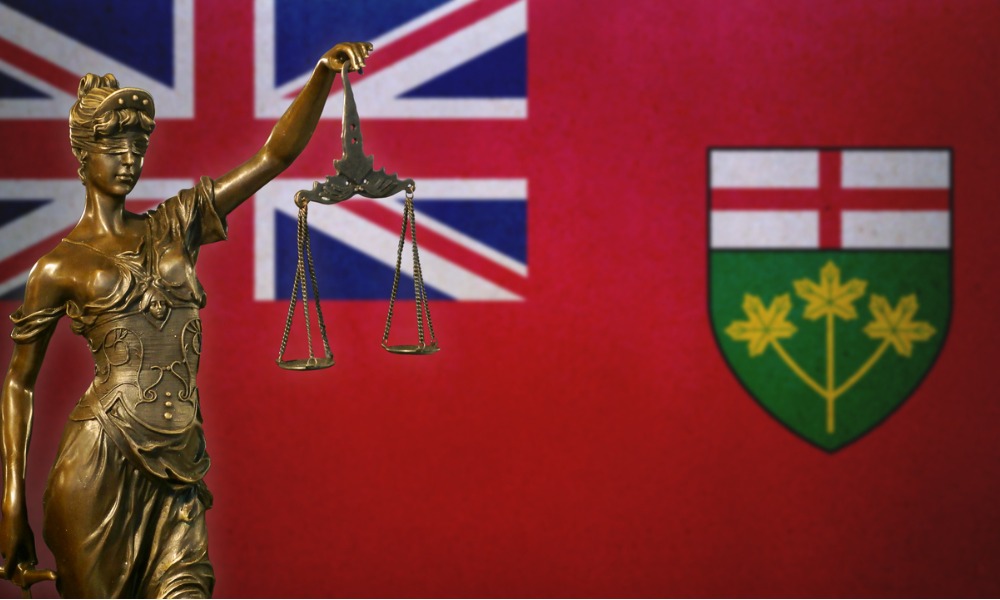Intellectual property lawyers say the federal government’s recently announced intellectual property strategy gives a positive framework for IP protection and promotion in Canada, but it could include more concrete incentives for emerging businesses.

Intellectual property lawyers say the federal government’s recently announced intellectual property strategy gives a positive framework for IP protection and promotion in Canada, but it could include more concrete incentives for emerging businesses.
The government announced in April that it plans to invest $85.3 million over the next five years to promote and protect intellectual property.
The strategy lists three main areas as its points of focus: updating IP legislation; creating tools and services to help companies grow; and increasing education and awareness of IP among businesses and the general public.
“This particular announcement, in all of its forms, is a bit of a new thing,” says Edward Fan, a partner at Torys LLP in Toronto and co-ordinator of the firm’s intellectual property group. There had been talk about a strategy for months, he says, but “the announcement is probably more sweeping than originally thought.”
Fan says these proposed changes to the law are important to prevent activities that could harm intellectual property in Canada.
As innovation becomes a larger part of jobs, he says, it’s difficult to imagine the economy growing at a “robust pace” without a strategy devoted to IP. Fan says, for example, that the strategy’s proposed requirement that trademark holders prove a mark’s use within three years of registration is intended to prevent people from registering trademarks they don’t intend to use.
This is particularly important because upcoming changes to the Trade-marks Act will allow people to register trademarks they are not currently using in Canada, he says. The strategy includes the creation of a college of patent and trademark agents.
“A college of patent and trademarks agents is something the industry has worked toward for a long, long time,” says Janet M. Fuhrer, a partner at Ridout & Maybee LLP in Ottawa and past president of the Intellectual Property Institute of Canada.
Establishing a specific college for trademark and patent agents shows how important these professionals are in the industry, she says.
“It’s recognition of the importance of intellectual property professionals in Canada,” says Fuhrer. Trademark and patent agents follow a code of ethics, she says, but a college will show the public it has established discipline procedures and standards like other regulated professions, such as teachers or engineers.
Included in the government’s proposed changes are mandating that patent demand letters specifically include the number of the patent being referred to and descriptions of the potentially problematic behaviour and specifying that settlement demands cannot be included in copyright notice and notice letters. Patent laws will be changed to, among other things, clarify that experiments for patent research are not considered infringement, the government’s plan says.
The strategy also includes proposed changes to trademark legislation, specifically requiring that rights’ holders prove a trademark is being used within three years of its registration. The strategy also includes ways to increase the certainty for businesses by allowing intellectual property licensees to continue to use the intellectual property during liquidation proceedings.
These proposed amendments have not been introduced yet.
The government has also announced several tools that could help businesses better use their intellectual property.
“The most exciting part [of the strategy] is the strategic intellectual property tools for growth,” says Nathaniel Lipkus, a partner and intellectual property litigator at Osler Hoskin and Harcourt LLP in Toronto.
These strategic tools for growth could distinguish Canada internationally if they’re used properly, he says.
The strategy’s website says one of the tools is having the Standards Council of Canada work with Canadian businesses to leverage their intellectual property during the development of international standards. Often, Canadian businesses don’t have a say in developing international standards for new technologies, says Lipkus.
The government plans to create a centralized portal that will help businesses access intellectual property held by the government and academic institutions.
Another tool announced was a collective that will bring businesses together to help them find IP solutions.
This collective, called the Patent Collective in the strategy, is a pilot project expected to run from 2019 to 2020.
“We want to make sure that companies know they have the support of the government to be involved in the conversations that actually do re-shape the world,” says Lipkus.
These tools could help companies compete globally and grow, because they show Canada to be a good place to do business, he says.
Some things, such as the Patent Collective, are still very abstract and won’t help all companies, says Lipkus.
“They won’t move the needle for very small companies that are just trying to live for tomorrow,” he says.
“But for companies that have actually got past a certain point and have a chance to grow, these are the kinds of things that could position Canada as a good place to be doing business.”
The government hasn’t always shown a strong commitment to protecting business’ intellectual property, says Lipkus.
“We’ve incentivized spending at other times; for example, on research and development,” he says.
“There’s never been a time that a Canadian government has signalled that intellectual property protection was important for Canadian businesses, and so I feel that we’re doing catch-up.”
Lipkus says the strategy’s general direction is positive but it needs to include more “pull” elements — incentives for businesses to protect their intellectual property.
He says he would have wanted to see more concrete items he could present to businesses.
Lipkus works with many businesses that are early in their development and are working to get their ideas from the lab to the market. They don’t have a lot of time or money for the multiple tasks they need to complete, he says, so protecting intellectual property does not seem as immediate to them as paying rent or hiring employees.
The government needs to do more than just announce tools; it needs to actively pursue innovative businesses, says Lipkus.
“Small companies aren’t surfing the [Canadian Intellectual Property Office] website,” he says.
These incentives could include providing tax credits for businesses that protect their IP or funding part of the first patent of a business’s core invention, Lipkus says.
From what he’s observed, he says, small businesses are more likely to prioritize activities that are helpful for their businesses if the government is going to give them money for it. This doesn’t mean the government needs to fund everything; Lipkus says the government could consider offering loans that are partly forgivable, for example.
“Until they have that,” he says, “I don’t know if this cocktail of programs will be the thing that tips the scale.”
The new strategy also includes programs dedicated to raising awareness about the importance of intellectual property for businesses and the general public.
The announced activities include: funding IP legal clinics; creating a dedicated group of IP officers in the government to work with the government; and surveying Canadians about how they understand intellectual property, including focusing on women and Indigenous Peoples, two groups the government says are more likely to not use IP.
Fuhrer calls suggestions that most companies don’t have intellectual property a “mischaracterization.”
“I think most companies do have intellectual property,” she says. “They don’t necessarily recognize that they have it or pursue registration of it.”
The strategy highlights women as a group to receive more education about intellectual property.
Many women already understand the need for IP strategies, says Fuhrer.
“As our economy grows, there are more women entrepreneurs, and I think many of them do understand the significance of intellectual property.”
The real need, she says, is to have more IP professionals who are women. The strategy also says it will target education for Indigenous communities, something Fuhrer calls “interesting” and important.








